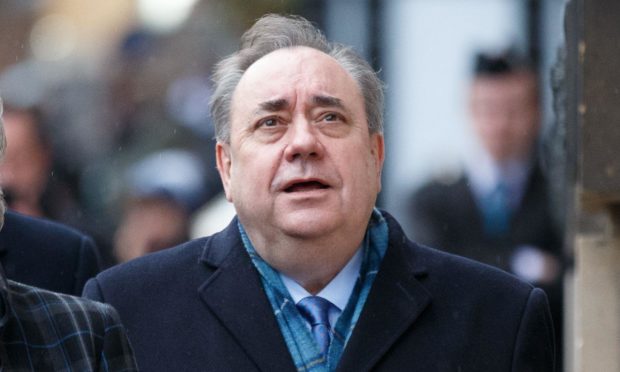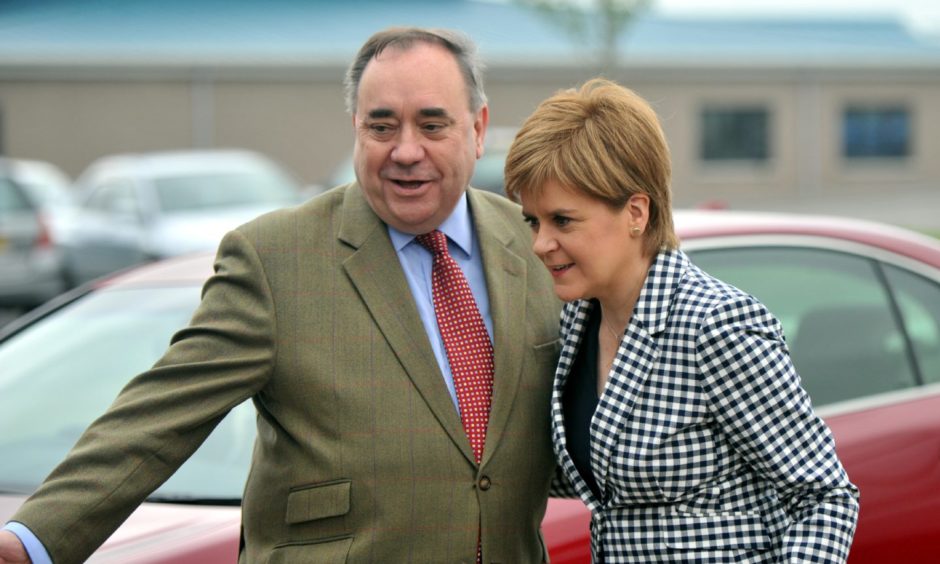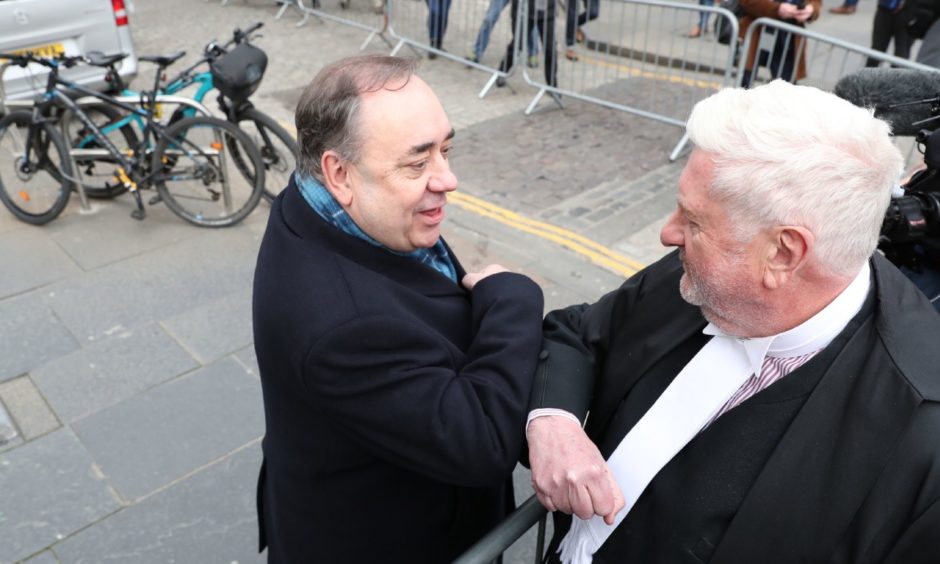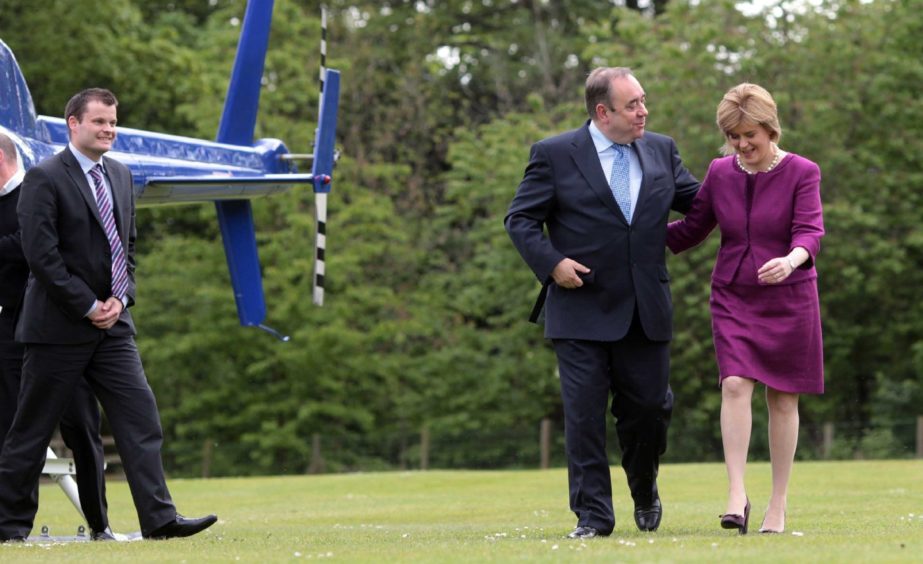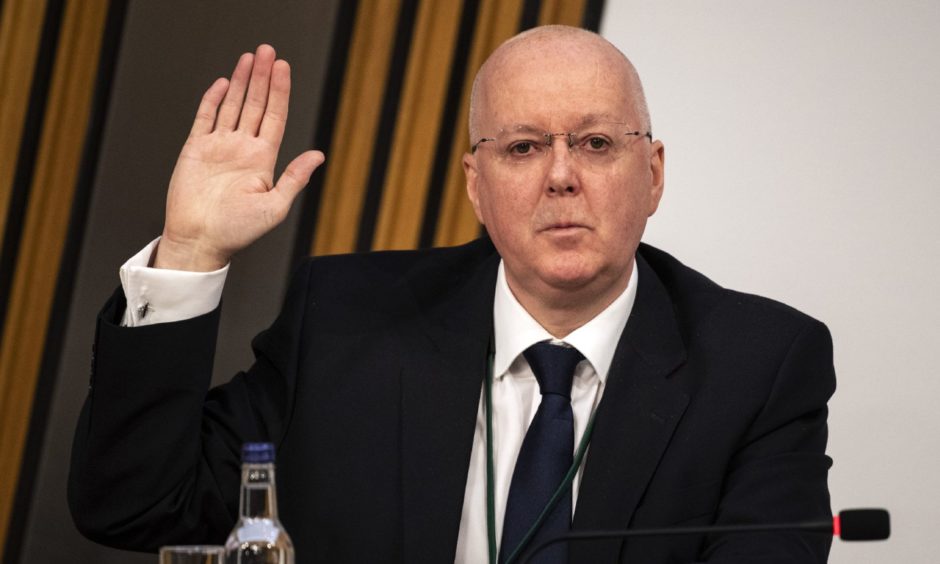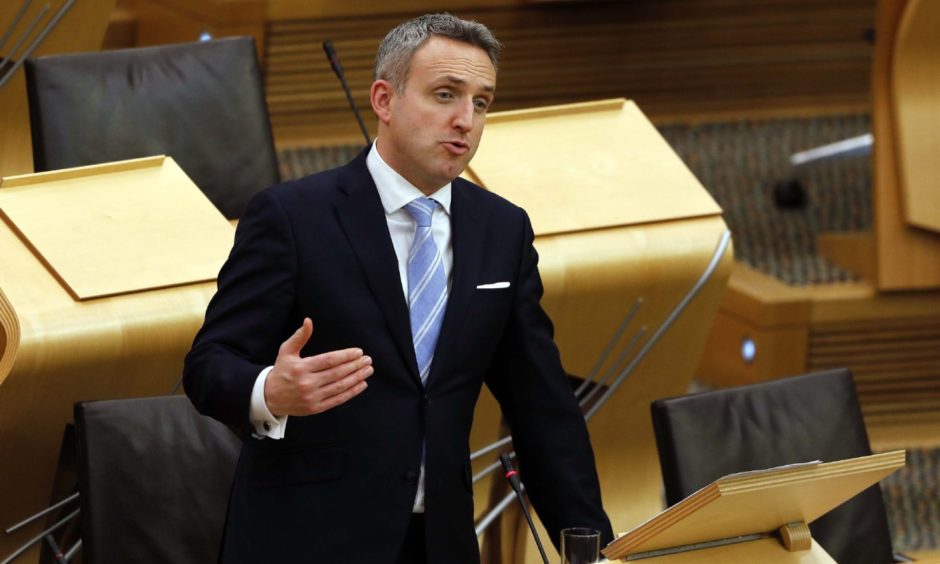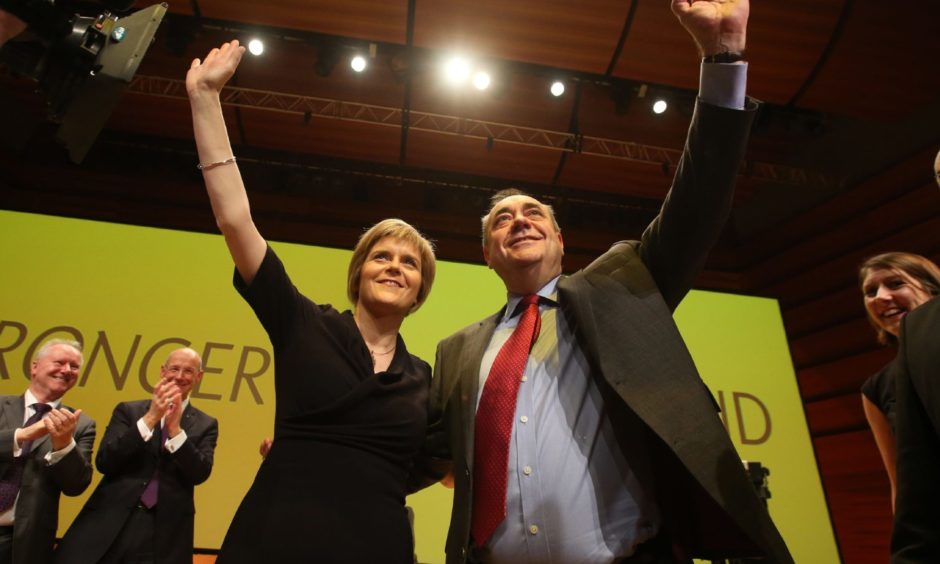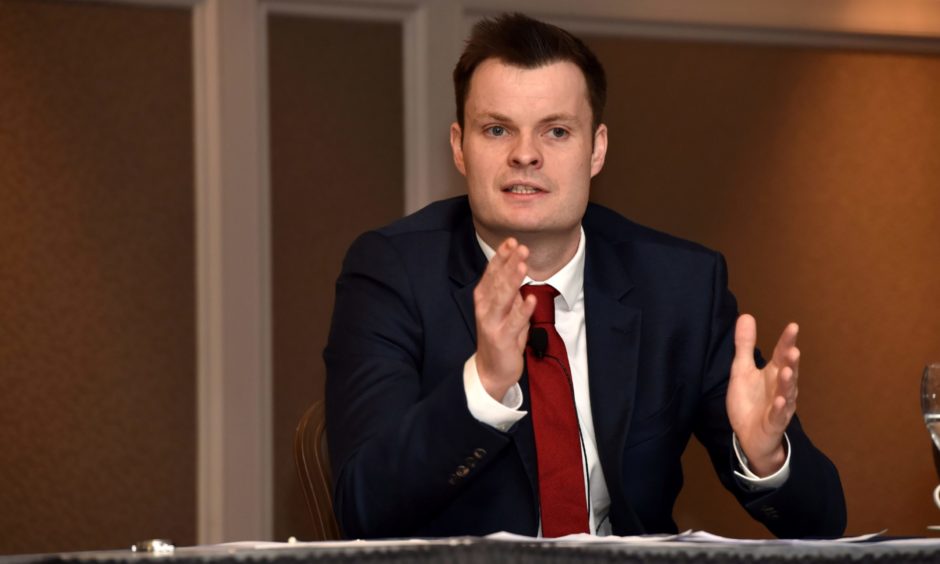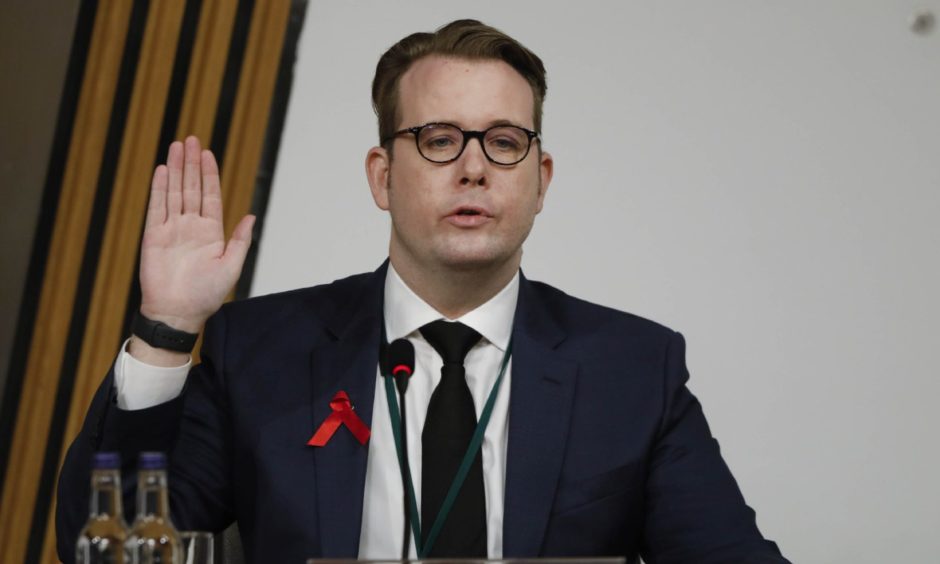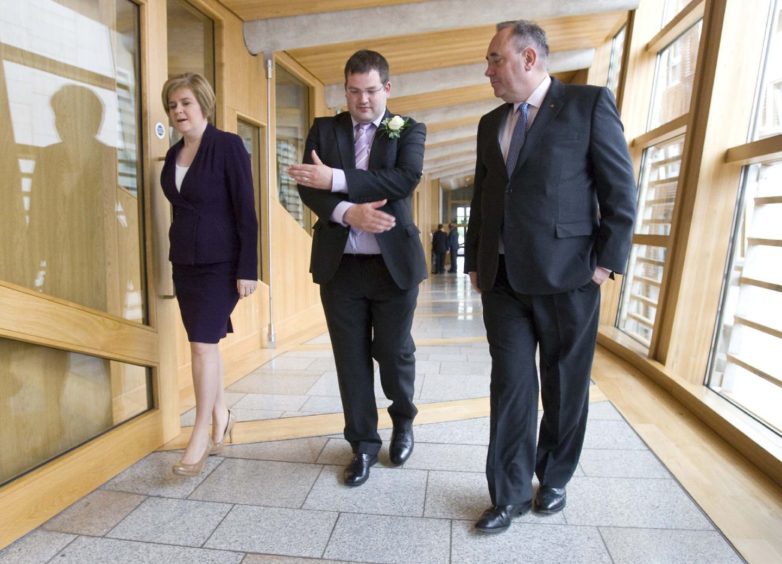Alex Salmond is expected to deliver an explosive press conference outlining allegations against Nicola Sturgeon after ditching an appearance at the inquiry into the botched handling of sexual harassment claims against him.
In the first major twist of a blockbuster fortnight that was supposed to see Ms Sturgeon and her former mentor each face MSPs at the Holyrood inquiry for the first time, a parliament spokeswoman confirmed Mr Salmond will no longer take part.
The spokeswoman said the former first minister “raised a number of issues for clarification” ahead of the scheduled meeting on Tuesday and that the committee will continue to hold talks with his representatives.
Mr Salmond has been locked in a dispute over what material should be published after the committee was told a statement detailing his complaints against Ms Sturgeon had been ruled inadmissible, despite it being available to read elsewhere.
Ms Sturgeon’s husband, Peter Murrell, the chief executive of the SNP, gave evidence to the committee on Monday and the first minister is expected to appear in front of MSPs to provide her own account next week.
The row over whether Mr Salmond’s full evidence should be published has risked collapsing the entire inquiry, with several committee members reported to be considering their positions as proceedings descend into a “crisis”.
As we approach the end game, major questions remain over who will make the finish line, what the view will be like when they get there, and what it will all mean for the SNP, Scottish independence and the futures of the key players involved.
The Salmond controversy
The Holyrood inquiry is essentially an investigation into an investigation, and its formal remit is to “consider and report” on the actions of the first minister, special advisers and government officials in response to the allegations against Mr Salmond.
As part of the process, MSPs have looked at how the government’s anti-harassment policy was developed, the internal handling of the complaints, a judicial review of the process and a series of meetings between Mr Salmond and Ms Sturgeon.
It has not considered the criminal case against Mr Salmond or the court proceedings that saw him acquitted of all charges.
In August 2018 it emerged the Scottish Government had investigated two allegations of sexual harassment against Alex Salmond while he was first minister under new rules that allowed retrospective investigations into former ministers.
The findings were passed to Police Scotland, which launched its own investigation. Mr Salmond denied the allegations, resigned from the SNP and launched legal action against the Scottish Government, accusing it of abuse of process.
He won the case and, in January 2019, the Court of Session ruled the inquiry was unlawful because the lead investigator had prior contact with the complainers.
The Scottish Government was forced to pay Mr Salmond £512,000 to cover his legal expenses and it later emerged this figure was so high because of procedural concerns about the government’s handling of his legal challenge.
Two weeks after winning the judicial review, Mr Salmond appeared at Edinburgh Sheriff Court on 13 counts, two of indecent assault, nine of sexual assault and two attempted rapes. He was cleared of all charges in March last year.
Salmond-Sturgeon meetings
A critical aspect of the case is when Nicola Sturgeon and her closest colleagues first became aware of the allegations against Mr Salmond, the conversations she had with him during this time and whether these were properly recorded.
A separate probe by an independent adviser has been launched into whether Ms Sturgeon broke the ministerial code by failing to timeously disclose contact she had with Mr Salmond and in what capacity.
She initially told MSPs she first heard of the allegations in a meeting with Mr Salmond at her home on April 2 2018, which had been arranged in her capacity as SNP leader.
However, Mr Salmond claims Ms Sturgeon arranged the meeting four days earlier, on March 29, with his former chief of staff, Geoff Aberdein, in her Holyrood office, and that it was clear the meeting would be to discuss the government’s misconduct probe.
The water was muddied further after Ms Sturgeon’s husband, Peter Murrell, stated under oath that he too believed it was about government business.
The nature of the meeting is important because no official was present and it was not logged in Ms Sturgeon’s ministerial diary. The first minister later said she “forgot” about the March 29 meeting.
Mr Salmond has accused Ms Sturgeon of misleading parliament and breaking the ministerial code by giving “false” evidence about her meetings with him – allegations she has repeatedly denied.
If the first minister is found to have breached the code or misled parliament, the ramifications could be huge – and some have suggested it could even spell the end for her political career.
An inquiry ‘in crisis’
MSPs will discuss Mr Salmond’s decision not to give evidence to the committee but it has been reported that several members called for an emergency meeting on Friday, with Lib Dem MSP Alex Cole-Hamilton saying the group is “in crisis”.
The committee originally hoped to take evidence in December but failed to agree a date amid a long-running dispute over whether they could obtain certain evidence from the Crown Office and whether they would publish all of his submissions.
There appeared to be a breakthrough after MSPs accepted an offer from Mr Salmond to appear this week, ahead of Ms Sturgeon, but it was called off again on Monday after parliament refused to publish his full submission to the ministerial code investigation.
Mr Salmond’s lawyers say he will give evidence at any point up until Ms Sturgeon’s mooted appearance on February 16, provided the submission is published.
If it is not published, committee rules mean it cannot be considered by members or included in the final report, and Mr Salmond is now reportedly planning a press conference before Ms Sturgeon provides her evidence.
It is the latest in a long-line of setbacks that has left some parliamentarians concerned that answers may never be found.
The Scottish Government has been criticised for being too slow to release critical documents, and the lack of non-redacted disclosures has also made things difficult.
Legal advice surrounding the judicial review has been blocked from publication at multiple stages by the Scottish Government on the grounds of legal privilege, despite two parliamentary votes demanding its release.
The information is key to whether the government should have conceded the costly judicial review prior to January 2019. It is not clear why or when the government was told to concede the case, and whether there were earlier signs it may lose.
Unlike the probe into whether Ms Sturgeon broke ministerial code, the inquiry is unable to fully consider the evidence of Mr Salmond’s former chief of staff.
A series of witnesses, including the country’s most senior civil servants and Mr Murrell, have also been compelled to “clarify” evidence, with Mr Salmond expressing “serious concerns” about the submission of the SNP chief executive in particular.
Mr Murrell appeared in December but was asked to return to be questioned about his recollection of the meetings between Ms Sturgeon and Mr Salmond, along with text and WhatsApp messages about the former party leader.
What have we learned so far
The inquiry and separate investigation into whether Nicola Sturgeon breached ministerial code are expected to report back before the Holyrood election in May.
Thousands of pages of testimony have been submitted and more than a dozen witnesses have been grilled by MSPs since the summer.
We have learned Nicola Sturgeon asked the permanent secretary to undertake a review of government policies and wrote to the presiding officer in October 2017 following claims that women had been sexually harassed at the Scottish Parliament.
In the wake of the Me Too movement, a controversial new harassment policy was drafted to cover both current and former ministers, and two women came forward who would later make complaints against Mr Salmond.
The creation of the policy has been an important focus of the committee and it later emerged the process was not supported by the UK Cabinet Office at the time.
The two women who went on to make a complaint against Mr Salmond had meetings with Ms Sturgeon’s principal private secretary, John Somers, in November 2017.
This fuelled claims that the harassment policy had been drawn up for use against Mr Salmond because, one day later, Mr Somers forwarded a letter from Ms Sturgeon to Leslie Evans, seeking confirmation that the new policy included consideration of complaints against former ministers dating from when they were in office.
Mr Somers has denied informing Ms Sturgeon or anyone other than his line manager about what was discussed in the meetings.
We also learned that the two women did not want to contact the police about their complaints and it was Ms Evans, the permanent secretary, who took the final decision to contact Police Scotland.
It has also been argued the disciplinary process was not followed in the case of Mark McDonald, the Aberdeen Donside MSP, who was forced to resign from his post as early years minister in November 2017 .
Some have claimed Mr McDonald may have been forced to resign to justify the need for a new harassment policy, with Ms Sturgeon first becoming aware of journalists investigating Mr Salmond on the same night Mr McDonald was told to quit.
Another intriguing dimension to the inquiry has been the emergence of text messages sent by Mr Murrell after Mr Salmond had appeared in court, facing criminal charges.
Mr Murrell sent the messages in January 2019, the same month a separate complaint was made about the former SNP leader to the Metropolitan Police, which the London force later dropped.
In the messages, Mr Murrell said it was a “good time to be pressurising” police and that the “more fronts he is having to firefight on the better for all complainers”.
Mr Murrell said he regretted the wording of the messages, saying they were “open to misinterpretation” and were a sign of how upset he was at the time. He said his intention was to direct those with questions to the police or Crown Office.
The extent of the breakdown in the relationship between Alex Salmond and his successor also became clear as it was revealed the pair have not spoken since 2018.
